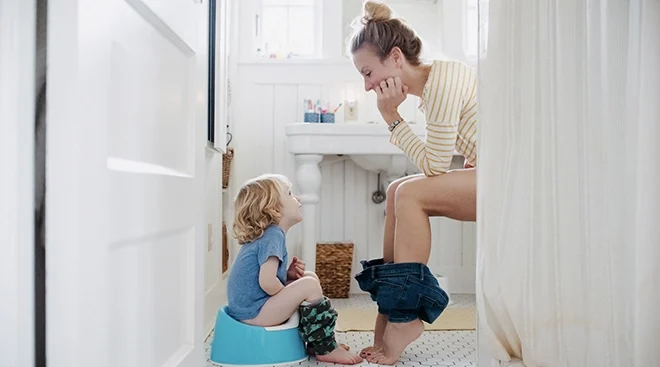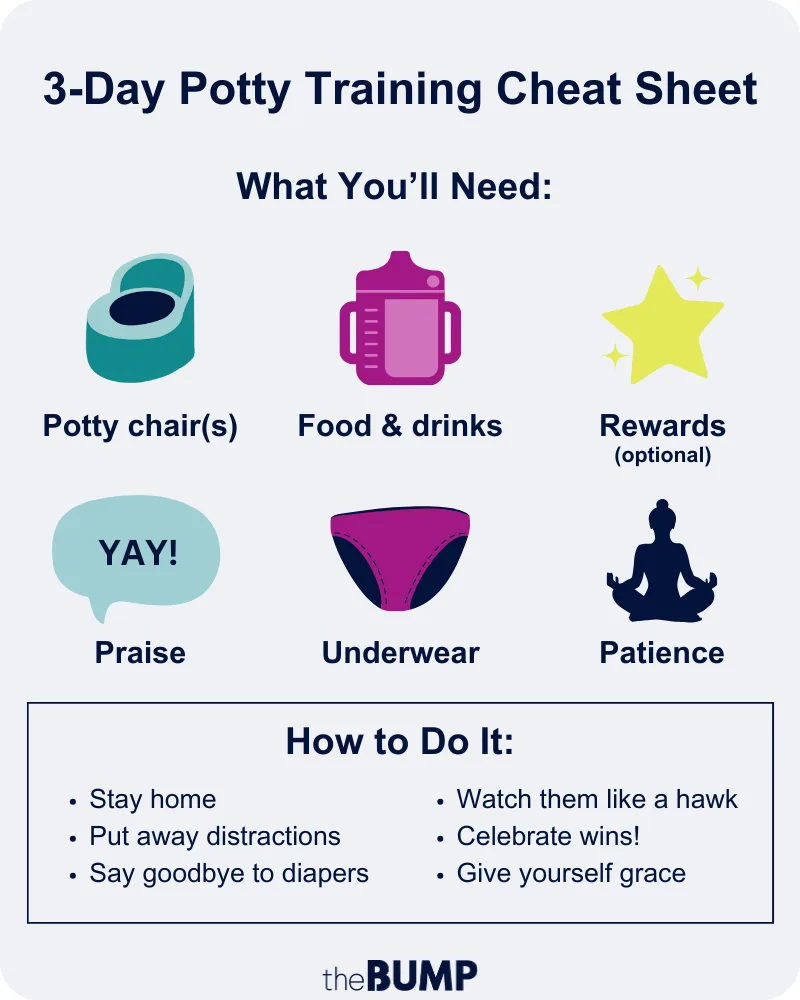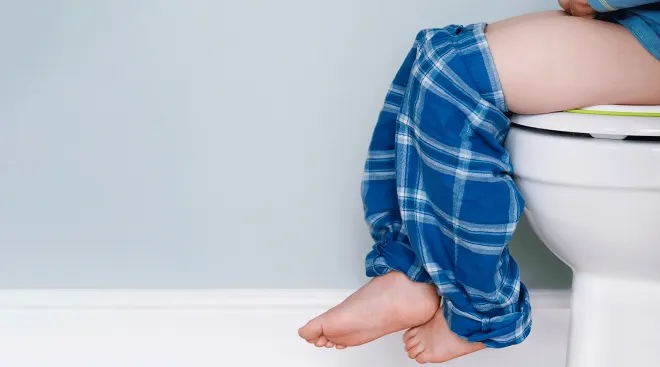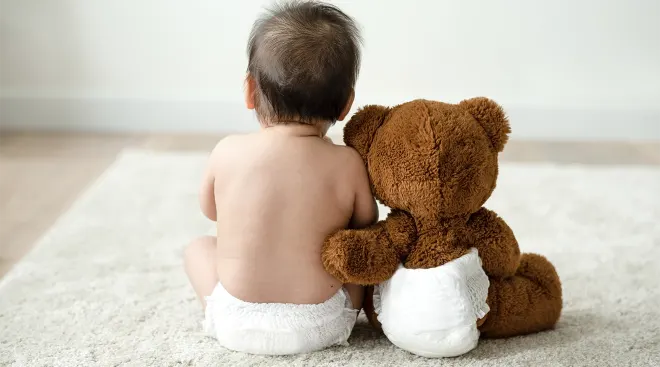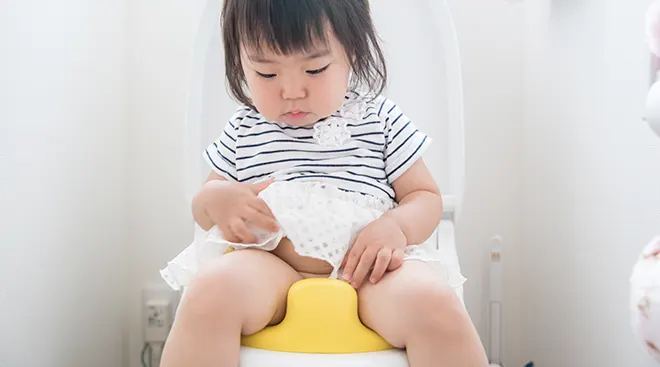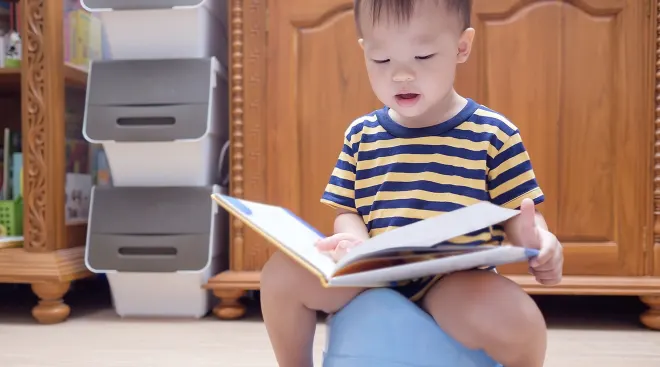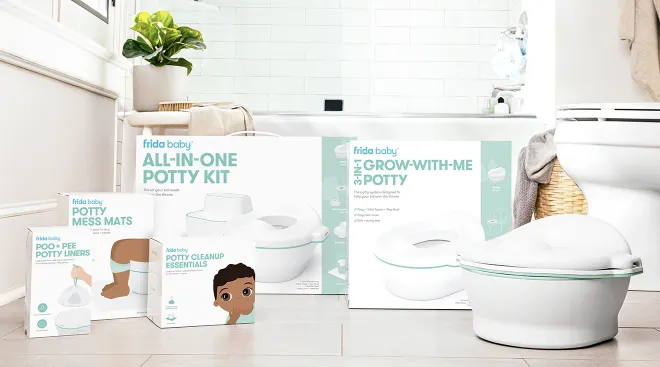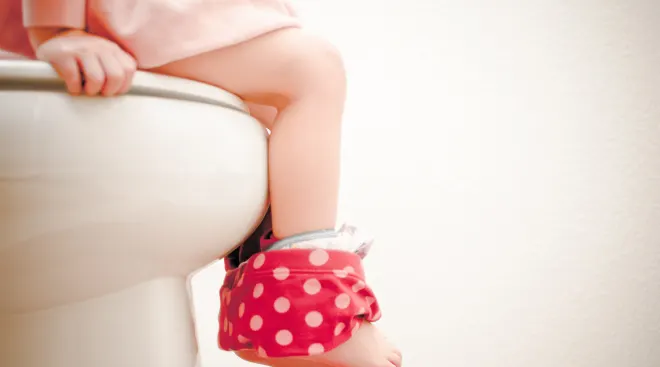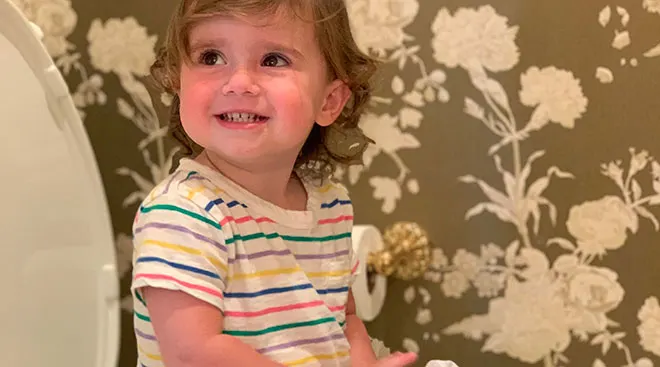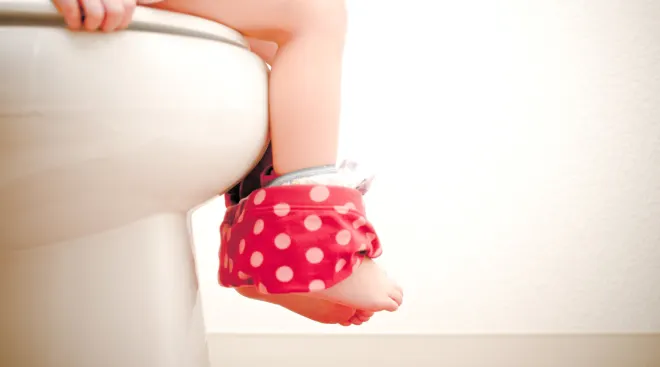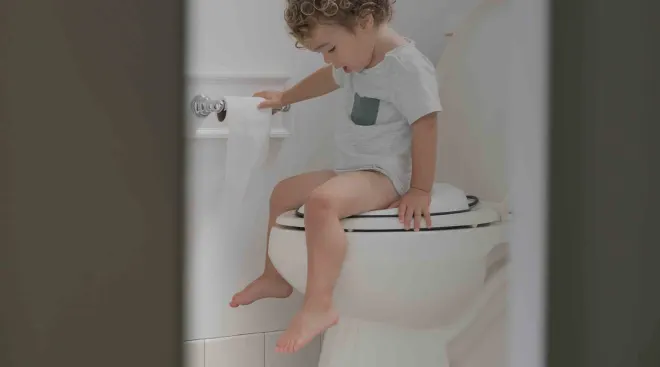Diapers Be Gone: How to Potty Train in 3 Days
Of all the early childhood milestones, potty training is one of the most momentous—and frequently one of the most stressful. It can be hard to tell who’s prouder of successful potty training—the parent or the child. There are countless methods out there, including many that promise three-day potty training. Sounds pretty amazing, right? But can you really get your toddler out of diapers in a long weekend? Here, experts weigh in on how to potty train in three days.
Three-day potty training is, well, exactly what it sounds like—a focused potty training method that’s supposed to get your little one out of diapers and onto the potty in a long weekend. It involves ditching the diapers cold turkey and celebrating each time your toddler has a “success” on the potty, according to Lora Jensen’s PDF ebook 3 Day Potty Training.
The three-day potty training method gained popularity largely through word of mouth as parents passed around Jensen’s book, published in the aughts (though it was nothing so new—looking further back, two psychologists wrote Toilet Training in Less Than a Day in 1974). There have been many variations since then, either inspired by Jensen or developed organically, that promise accelerated potty training success.
There’s no denying the allure of potty training your toddler in just three days. When it works, the benefits are numerous: If you use disposable diapers, you’ll save a lot of money and cut down on landfill-bound waste; if you use cloth diapers, you’ll get to do way less laundry. Plus, no more wrestling a kiddo who’s outgrowing the changing table just to get a clean diaper on them, and no more drawn out potty power struggles.
Michelle Swaney, CEO of The Potty School, potty training consultant and author of The Complete Guide to Potty Training, says that three-day potty training can be a bonding opportunity for you and your child, since you’ll be watching their every move for successes. “You get to hang out with your child! What a joy to have three solid days of time with your little one to teach, guide and celebrate successes with them,” she says. Swaney adds that three-day potty training can be great for working parents if it works—you’re fitting everything into a weekend.
While there are plenty of benefits to three-day potty training, make sure your expectations are realistic. “While it’s possible to lay a foundation for potty training in three days, there’s still a lot of solidifying of skills to do after that,” says Jenny Phelps, an Oh Crap! Potty Training certified expert. Oh Crap! Potty Training: Everything Modern Parents Need to Know to Do It Once and Do It Right is another popular book and potty training method that has a similar foundation to many of the three-day methods, but whose practitioners would prefer to distance themselves from the fast-track trend.
There’s a range of opinions on the best age to potty train a child. Jensen says in her book that 22 months old is ideal.
Sally Neuberger, a licensed clinical social worker and potty coach, says that there are actually two stages of potty readiness: The first happens around 2 years old, when the child first expresses interest in the potty and may even start using it, and then around 3 years old, when they’re more developmentally ready and are more likely to be potty trained painlessly in three days.
According to Neuberger, signs of readiness in that second stage are:
- The child can stay dry for two to four hours at a time
- They can pull their pants up and down
- They let you know when they’ve peed or pooped
- They know the potty routine
There are a lot of ideas out there about whether girls are easier to potty train than boys, but it really has more to do with the individual child than their sex, Neuberger says. As far as sitting or standing, she recommends starting out sitting down for both boys and girls. Once a boy has pooped sitting down about 10 times, then you can introduce the concept of peeing standing up; if you start with them standing, Neuberger points out that they might be prone to poop standing up as well.
One of the keys to successful three-day potty training is preparation. Here’s what you’ll need:
• Potty chair(s). While not strictly necessary, having at least one potty chair, if not more, is useful. In her book, Jensen suggests having just one potty chair and keeping it in the bathroom to reinforce that association. There are also different types of potty chairs, but Neuberger is a strong proponent of learning on a floor-level potty chair so your child’s feet can firmly touch the floor, which will help them activate their lower pelvic area and teach them the correct positioning.
• Plenty of food and drinks. Part of the three-day potty training method is staying home and close to a toilet the entire time, so it’s important to stock up on food for your toddler (and plenty of fluids!) before you begin.
• Rewards—maybe. This is actually the source of some contention, as in her book Jensen recommends using stickers, small toys and snacks as rewards, while others advise against this avenue. If you don’t want to go the rewards route, plenty of praise—verbal reinforcement, hugs, high-fives—can do wonders. Allison Jandu, owner and founder of Potty Training Consultant, suggests treading carefully with rewards: “It’s best to ease away from the rewards gradually to avoid disrupting potty progress. So after the first two weeks or so, start setting longer-term goals for your little one. Instead of each individual potty success, reward each successful potty day.”
• Underwear. Even within the different three-day potty training methods, opinions about when to introduce underwear vary, so it’s up to you whether to have it on hand (Jensen recommends stocking up on 20 to 30 pairs). Many suggest transitioning to underwear toward the end of the three days. Most experts agree to avoid diapers, pull-ups or even padded underwear marketed as “training pants” once you start three-day potty training.
If a partner is involved, make sure you’re on the same page before beginning three-day potty training and that you have a clear plan for who is doing what and when. Consistency is crucial.
Depending on the boundaries in your home and what you’re comfortable with, it can be helpful to model successful toileting for your child in the weeks leading up to potty training so they know what it looks like and the steps involved, and to help jumpstart your child’s intrinsic motivation to mimic the beloved adults in their life.
Day 1
• Prepare yourself. The first day of three-day potty training is by far the most intense, since you’re supposed to keep your eyes on your child the entire day. No leaving the house, no running to the store, no walking the dog. So make sure you’ve had your coffee, showered, checked your email and anything else you need to do before beginning. Then, put the phone away and get focused.
• Say goodbye to diapers. In her book, Jensen suggests having the child ceremonially throw away their remaining diapers, partially so they understand what’s happening and partially to prevent the parent from falling back on diapers as a crutch.
• Take off their layers. While Jensen’s book suggests starting the child off in undies and a shirt, most other three-day potty training practitioners recommend having your kiddo go totally bottomless for at least the first day.
• Watch them like a hawk. Keep a close eye on your kid, waiting to learn their signs and “catch” them as they start to pee or poop (you can play and go about normal home activities, just with a heightened sense of awareness). When you notice it happening, bring them to the bathroom to potty.
• Celebrate. Every time they get even a drop of pee in the potty, make a big deal out of it. Jensen’s guide suggests giving a sticker. Whatever you choose, the point is to make it exciting.
• Decide whether to offer reminders. In her book, Jensen suggests reminding—but not asking—your child frequently about the potty, with phrases like “let Mommy know when you have to go pee.” She says to check the child’s undies often and praise them every time they’re dry.
• Evaluate if it’s working. According to Neuberger, “generally parents will know on the morning of day one whether it’s going to be successful.” If your kiddo continues not only to have accidents but also seems oblivious to them, Neuberger says it’s likely their bodies just aren’t ready yet. “We don’t want parents wasting their time and getting frustrated in the process,” she says. If this is the case, she suggests not making a big deal of it but cutting your losses and trying again in a month or two. (Jensen, on the other hand, says many kids don’t get it until the end of day three, so you may have to go with your gut on this one.)
• Think about nights and naps. Once again, there’s a range of opinions on whether to nap and night train in conjunction with three-day potty training. Jensen’s book urges parents to get it all done at the same time to avoid confusing the child. Neuberger, however, says kids typically aren’t ready for night training for another three to six months after daytime training. Many experts say night readiness is an entirely different thing and that it’s less psychological and more biological. If you do opt to try going diaper-free for sleep times, limit liquids beforehand and make sure they go potty before their snooze.
Days 2 & 3
Ideally, by the end of day one your child has started to get the hang of things and is now communicating—either verbally or with gestures—when they need to go potty.
After 3-day potty training
Some people suggest switching to undies by the end of the three days, while Neuberger recommends keeping your little one pants-free at home for at least a few weeks while they continue to practice. If your child is in daycare, then make sure to be in touch with their childcare provider to formulate a plan.
One thing that most experts can agree on is that potty training should be a positive experience, free from scolding and punishment. There will be accidents, and while you can redirect your child, carry them to the potty and remind them that pee and poop go in the potty, yelling or shaming them about making a mess will only create problems. “For most kids, this is the hardest thing they’ve had to learn up to this point in their lives,” says Phelps.
If your attempt at three-day potty training doesn’t work, remember that potty training is most often a gradual process. The three days are most often for laying the foundation for potty training, but there’s a lot of work to be done after that. “I’ve met less than a handful of people, in numerous years of potty training consulting, who actually have a 100 percent potty trained child after three days,” says Swaney.
Jandu agrees. “When a parent is practicing three-day potty training and their child isn’t fully potty trained at the end of those three days, they think they’ve failed somehow, which simply isn’t true at all,” she says. “My mantra is: Potty training is a process, not a one-time event.”
Don’t expect potty perfection. But if three-day potty training doesn’t seem to stick at all, here are a few other possibilities:
• They’re not ready. Neuberger says that very often, potty training doesn’t stick because it’s mistakenly done during the first window of readiness. “Most parents get trapped into thinking that window one actually means their kids are ready,” she says. If potty training isn’t working, your child may not be developmentally ready yet, and you may need to revisit it at another time. Don’t force it, adds Swaney: “Some of our clients who tried three-day potty training wish that they would have had a plan if or when constipation became an issue, they wish they had known their preschool or nursery’s policy on undies when a child isn’t fully potty trained and that the ‘window’ of potty training isn’t really just a few days long.”
• Developmental delays. If your child has gross or fine motor delays, sensory issues or difficulty with emotional regulation, Neuberger says the process will likely be delayed. Sometimes potty training can illuminate some underlying issues that are worth exploring.
• Lack of consistency. If parents don’t stick with whatever program you’ve chosen or go back and forth between diapers and undies, for example, it could confuse your child and cause setbacks.
• Parents are anxious. Kids can sense their parents’ emotions. Even if you’re refraining from asking them if they have to go to the bathroom 90 times a minute, they can still sense your stress.
Looking for inspiration for your three-day potty training journey? We talked to real parents, who had plenty of advice—and, yes, success stories too.
“I was pretty nervous to start potty training my 26-month-old, but she was clearly ready—and it turns out, my worries were needless. The Oh Crap! method worked beautifully for us. Before we got started, we read a whole bunch of potty training children’s books with our daughter to set the stage. When it was time, we bought two portable potty chairs so one would be nearby at all times, rolled up our carpets (a must!), said bye-bye to her diapers (literally—she even waved to them) and had our girl run around the house naked for a couple days. Every time she started to pee or looked like she was about to, we raced her over to the potty, and she caught on faster than I expected! When it was time to add clothing into the mix, I made sure to put her in leggings that were easy to pull down on her own. Having her go no. 2 in the potty was a longer process (for a while, she would save it up for her naptime diaper), but she was peeing in the potty pretty consistently after just three or four days. Yes, there were accidents along the way, and yes, I wound up bribing her with chocolate to poop on the potty, but all in all, it was a fairly smooth process!" —Ashlee Neuman, mom of two and content director at The Bump
“When they go poop and take a bit, have a book for them to look at while they do their business.” —Kayla
“Stopping liquid intake one to two hours before bed was key for us! If my son asks for a drink before bedtime, we use a shot glass and call it his ‘tiny cup’—he still feels like he’s getting a full drink without the risk of a bedtime accident!” —Caroline
“Stickers! Who doesn’t like stickers? I used a sticker chart as a reward. Also, I did three-day potty training in the summer. And instead of being stuck inside the house, we just took the potty with us for walks and to the playground. It worked!” —Diana
“Daycare is tough! There are communication breakdowns with the caregivers. And they typically stick firmly to a policy instead of doing what works for the child. Daycare is also awesome! The herd mentality of a bunch of potty trainers going to the bathroom together is what helped my little guy seal the deal in his potty training journey. Get a travel potty and take it everywhere you go, even after you think your kiddo is solidly potty trained.” —Carrie
Whatever the outcome, it’s important not to be too hard on yourself. Chances are, even if your child successfully potty trains within three days, they’ll still have accidents here and there or may regress before it finally clicks. Take comfort in knowing that your kiddo won’t go off to college in diapers. “There are a million ways to potty train, and most kids are going to get it with whatever way their parents decide,” Neuberger reassures.
Please note: The Bump and the materials and information it contains are not intended to, and do not constitute, medical or other health advice or diagnosis and should not be used as such. You should always consult with a qualified physician or health professional about your specific circumstances.
Plus, more from The Bump:
Allison Jandu is the owner and founder of Potty Training Consultant.
Sally Neuberger is a licensed clinical social worker and potty coach.
Jenny Phelps is an Oh Crap! potty training certified expert and the owner of Oh Crap! Potty Training with Jenny.
Michelle Swaney, is the CEO of The Potty School, a potty training consultant and author of The Complete Guide to Potty Training Your Child: Expert Solutions for Any Mess.
Cleveland Clinic, Potty Training Reward Ideas That Limit Sugar, October 2022
Learn how we ensure the accuracy of our content through our editorial and medical review process.
Navigate forward to interact with the calendar and select a date. Press the question mark key to get the keyboard shortcuts for changing dates.
































